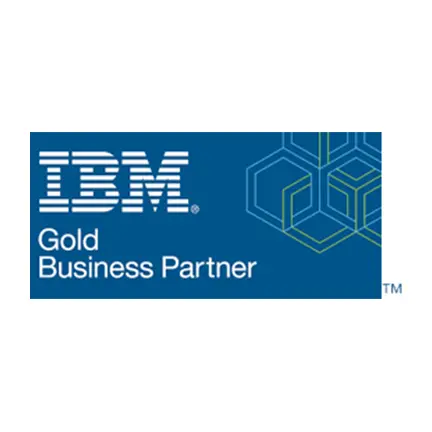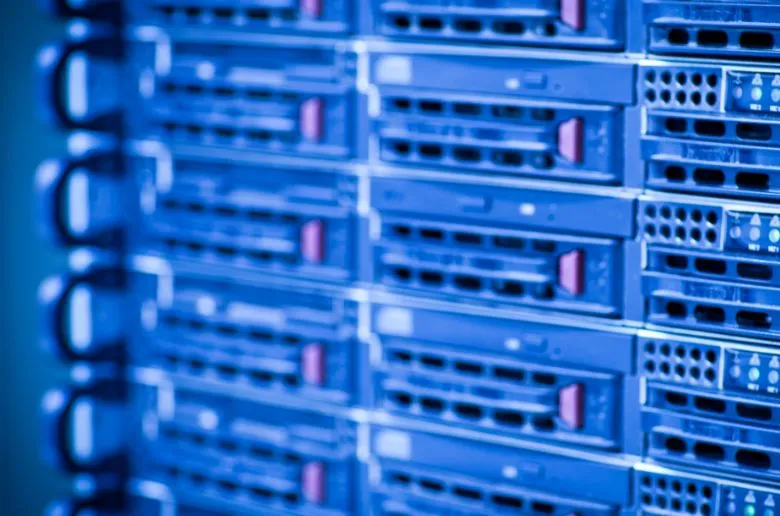Data Center Transformation
Datacentre's are the backbones of many organizations. From internal services such as email and collaboration software, to customer facing services such as portals and applications, organizations rely on the datacentre to support vital facets of their business.
It is important that these organizations stay up to date with the latest technologies and processes to keep up with growing demands. One way to accomplish this is by adopting cloud computing models.
Data Center Transformation
Datacentre's are the backbones of many organizations. From internal services such as email and collaboration software, to customer facing services such as portals and applications, organizations rely on the datacentre to support vital facets of their business.
It is important that these organizations stay up to date with the latest technologies and processes to keep up with growing demands. One way to accomplish this is by adopting cloud computing models
Data Center Transformation
Datacentre's are the backbones of many organizations. From internal services such as email and collaboration software, to customer facing services such as portals and applications, organizations rely on the datacentre to support vital facets of their business.
It is important that these organizations stay up to date with the latest technologies and processes to keep up with growing demands. One way to accomplish this is by adopting cloud computing models.
The problem is that many organizations still rely on traditional datacentre's that were not created with the possibilities enabled by cloud computing in mind. This puts their business capabilities at risk.
To remedy this, organizations must undergo a technological shift from traditional datacentre's to hybrid datacentre's that can easily utilize the cloud computing paradigm. This usually entails an overall datacentre transformational initiative.

The problem is that many organizations still rely on traditional datacentre's that were not created with the possibilities enabled by cloud computing in mind. This puts their business capabilities at risk.
To remedy this, organizations must undergo a technological shift from traditional datacentre's to hybrid datacentre's that can easily utilize the cloud computing paradigm. This usually entails an overall datacentre transformational initiative.


The problem is that many organizations still rely on traditional datacentre's that were not created with the possibilities enabled by cloud computing in mind. This puts their business capabilities at risk.
To remedy this, organizations must undergo a technological shift from traditional datacentre's to hybrid datacentre's that can easily utilize the cloud computing paradigm. This usually entails an overall datacentre transformational initiative.
Our Technology Partners

Microsoft Azure
Resemble Systems being a Microsoft Gold Data Center Partner helping organizations to undergo a technological shift from traditional datacenters to hybrid datacenters that can easily utilize the cloud computing paradigm. Microsoft Azure provide infrastructure as a service (IaaS) is an instant computing infrastructure, provisioned and managed over the Internet. Quickly scale up and down with demand and pay only for what you use. Azure is an ever-expanding set of cloud computing services to help your organization meet its business challenges. Azure gives you the freedom to build, manage, and deploy applications on a massive, global network using your preferred tools and frameworks.

IBM Cloud Paks
IBM Cloud Paks are enterprise-ready, containerized software solutions that give clients an open, faster and more secure way to move core business applications to any cloud. Each IBM Cloud includes containerized IBM middleware and common software services for development and management, on top of a common integration layer — designed to reduce development time by up to 84 percent and operational expenses by up to 75 percent. IBM Cloud Paks run wherever Red Hat OpenShift runs and are optimized for productivity and performance on Red Hat OpenShift on IBM Cloud.
Our Technology Partners

Microsoft Azure
Resemble Systems being a Microsoft Gold Data Center Partner helping organizations to undergo a technological shift from traditional datacenters to hybrid datacenters that can easily utilize the cloud computing paradigm. Microsoft Azure provide infrastructure as a service (IaaS) is an instant computing infrastructure, provisioned and managed over the Internet. Quickly scale up and down with demand and pay only for what you use. Azure is an ever-expanding set of cloud computing services to help your organization meet its business challenges. Azure gives you the freedom to build, manage, and deploy applications on a massive, global network using your preferred tools and frameworks.

IBM Cloud Paks
IBM Cloud Paks are enterprise-ready, containerized software solutions that give clients an open, faster and more secure way to move core business applications to any cloud. Each IBM Cloud includes containerized IBM middleware and common software services for development and management, on top of a common integration layer — designed to reduce development time by up to 84 percent and operational expenses by up to 75 percent. IBM Cloud Paks run wherever Red Hat OpenShift runs and are optimized for productivity and performance on Red Hat OpenShift on IBM Cloud.
Our Technology Partners

Microsoft Azure
Resemble Systems being a Microsoft Gold Data Center Partner helping organizations to undergo a technological shift from traditional datacenters to hybrid datacenters that can easily utilize the cloud computing paradigm. Microsoft Azure provide infrastructure as a service (IaaS) is an instant computing infrastructure, provisioned and managed over the Internet. Quickly scale up and down with demand and pay only for what you use. Azure is an ever-expanding set of cloud computing services to help your organization meet its business challenges. Azure gives you the freedom to build, manage, and deploy applications on a massive, global network using your preferred tools and frameworks.

IBM Cloud Paks
IBM Cloud Paks are enterprise-ready, containerized software solutions that give clients an open, faster and more secure way to move core business applications to any cloud. Each IBM Cloud includes containerized IBM middleware and common software services for development and management, on top of a common integration layer — designed to reduce development time by up to 84 percent and operational expenses by up to 75 percent. IBM Cloud Paks run wherever Red Hat OpenShift runs and are optimized for productivity and performance on Red Hat OpenShift on IBM Cloud.
Our Services
Founded in 2010, Resemble Systems served 100+ customers in Middle East and India region and developed best practice in delivering data center transformation with expert planning process, capacity planning, cost effective, secure that maximize ROI helping customers to move from Capex to Opex. Below are our major services offerings around Data Center Transformation:
Cloud Migration
Migrating to the cloud is easier than you might think. Take the first steps by following a proven methodology, using tools and partner offers to help along the way. Migrate to Azure in a way that works for your business without impacting your day-to-day operations, and learn ways of optimizing your migration to assure long-term results.
-
Start with the right plan and the best tools.
-
Discover and assess your environment.
-
Migrate with minimal business impact.
-
Implement your cloud migration easily.
Private Cloud
A private cloud consists of computing resources used exclusively by one business or organization. The private cloud can be physically located at your organization’s on-site datacentre or it can be hosted by a third-party service provider. But in a private cloud, the services and infrastructure are always maintained on a private network and the hardware and software are dedicated solely to your organization.
-
More flexibility—your organisation can customise its cloud environment to meet specific business needs.
-
Improved security—resources are not shared with others, so higher levels of control and security are possible.
-
High scalability—private clouds still afford the scalability and efficiency of a public cloud.
Business Continuity
As an organization you need to figure out how you're going to keep your data safe, and apps/workloads running when planned and unplanned outages occur. Our unique service helps ensure business continuity by keeping your apps running on VMs and physical servers available if a site goes down.
-
More flexibility—your organisation can customise its cloud environment to meet specific business needs.
-
Improved security—resources are not shared with others, so higher levels of control and security are possible.
-
High scalability—private clouds still afford the scalability and efficiency of a public cloud.
Our Services
Founded in 2010, Resemble Systems served 100+ customers in Middle East and India region and developed best practice in delivering data center transformation with expert planning process, capacity planning, cost effective, secure that maximize ROI helping customers to move from Capex to Opex. Below are our major services offerings around Data Center Transformation:
Cloud Migration
Migrating to the cloud is easier than you might think. Take the first steps by following a proven methodology, using tools and partner offers to help along the way. Migrate to Azure in a way that works for your business without impacting your day-to-day operations, and learn ways of optimizing your migration to assure long-term results.
-
Start with the right plan and the best tools
-
Discover and assess your environment
-
Migrate with minimal business impact
-
Implement your cloud migration easily
Private Cloud
A private cloud consists of computing resources used exclusively by one business or organization. The private cloud can be physically located at your organization’s on-site datacentre or it can be hosted by a third-party service provider. But in a private cloud, the services and infrastructure are always maintained on a private network and the hardware and software are dedicated solely to your organization.
-
More flexibility—your organisation can customise its cloud environment to meet specific business needs.
-
Improved security—resources are not shared with others, so higher levels of control and security are possible.
-
High scalability—private clouds still afford the scalability and efficiency of a public cloud.
Business Continuity
As an organization you need to figure out how you're going to keep your data safe, and apps/workloads running when planned and unplanned outages occur. Our unique service helps ensure business continuity by keeping your apps running on VMs and physical servers available if a site goes down.
-
More flexibility—your organisation can customise its cloud environment to meet specific business needs.
-
Improved security—resources are not shared with others, so higher levels of control and security are possible.
-
High scalability—private clouds still afford the scalability and efficiency of a public cloud.
Our Services
Founded in 2010, Resemble Systems served 100+ customers in Middle East and India region and developed best practice in delivering data center transformation with expert planning process, capacity planning, cost effective, secure that maximize ROI helping customers to move from Capex to Opex. Below are our major services offerings around Data Center Transformation:
Cloud Migration
Migrating to the cloud is easier than you might think. Take the first steps by following a proven methodology, using tools and partner offers to help along the way. Migrate to Azure in a way that works for your business without impacting your day-to-day operations, and learn ways of optimizing your migration to assure long-term results.
-
Start with the right plan and the best tools.
-
Discover and assess your environment.
-
Migrate with minimal business impact.
-
Implement your cloud migration easily.
Private Cloud
A private cloud consists of computing resources used exclusively by one business or organization. The private cloud can be physically located at your organization’s on-site datacentre or it can be hosted by a third-party service provider. But in a private cloud, the services and infrastructure are always maintained on a private network and the hardware and software are dedicated solely to your organization.
-
More flexibility—your organisation can customise its cloud environment to meet specific business needs.
-
Improved security—resources are not shared with others, so higher levels of control and security are possible.
-
High scalability—private clouds still afford the scalability and efficiency of a public cloud.
Business Continuity
As an organization you need to figure out how you're going to keep your data safe, and apps/workloads running when planned and unplanned outages occur. Our unique service helps ensure business continuity by keeping your apps running on VMs and physical servers available if a site goes down.
-
More flexibility—your organisation can customise its cloud environment to meet specific business needs.
-
Improved security—resources are not shared with others, so higher levels of control and security are possible.
-
High scalability—private clouds still afford the scalability and efficiency of a public cloud.
- Data storage, management, backup and recovery.
- Productivity applications, such as email.
- High-volume E-commerce transactions.
- Big data, machine learning and artificial intelligence.
- Powering online gaming communities.
The Role of the Data Centre
- Data storage, management, backup and recovery.
- Productivity applications, such as email.
- High-volume E-commerce transactions.
- Big data, machine learning and artificial intelligence.
- Powering online gaming communities.
The Role of the Data Centre
- Data storage, management, backup and recovery.
- Productivity applications, such as email.
- High-volume E-commerce transactions.
- Big data, machine learning and artificial intelligence.
- Powering online gaming communities.
The Core Components of a Data Center

Facility
The usable space available for IT equipment. Providing round-the-clock access to information makes data centers some of the world’s most energy-consuming facilities. Design to optimize space and environmental control to keep equipment within specific temperature/humidity ranges are both emphasized.

Core Components
Equipment and software for IT operations and storage of data and applications. These may include storage systems; servers; network infrastructure, such as switches and routers; and various information security elements, such as firewalls.

Operations Staff
Personnel available to monitor operations and maintain IT and infrastructure equipment around the clock.
The Core Components of a Data Center

Facility
The usable space available for IT equipment. Providing round-the-clock access to information makes data centers some of the world’s most energy-consuming facilities. Design to optimize space and environmental control to keep equipment within specific temperature/humidity ranges are both emphasized.

Core Components
Equipment and software for IT operations and storage of data and applications. These may include storage systems; servers; network infrastructure, such as switches and routers; and various information security elements, such as firewalls.

Operations Staff
Personnel available to monitor operations and maintain IT and infrastructure equipment around the clock.
The Core Components of a Data Center

Facility
The usable space available for IT equipment. Providing round-the-clock access to information makes data centers some of the world’s most energy-consuming facilities. Design to optimize space and environmental control to keep equipment within specific temperature/humidity ranges are both emphasized.

Core Components
Equipment and software for IT operations and storage of data and applications. These may include storage systems; servers; network infrastructure, such as switches and routers; and various information security elements, such as firewalls.

Operations Staff
Personnel available to monitor operations and maintain IT and infrastructure equipment around the clock.
What Does Data Center Tier Levels Mean
Data center tier levels refer to a data center's ability to maintain functionality during various kinds of failures.
The global IT community has defined data center reliability by referring to up to four tiers for data center operations. Groups such as the Uptime Institute, a global research organization, have defined these tiers and provided certifications for data center systems.


These specifications for data center sustainability help to create a consistent standard in the business world where vendors, clients and others typically refer to these various tier levels when planning, creating and implementing data centers in individual corporate or small business environments.
Tier 1 data center, system processes are carried out through a single path in a nonredundant system that does not offer fault tolerance.
In a Tier 2 system, there may be some redundant features, for example, in climate and energy source support.
Tier 3 systems will typically have more comprehensive protections for power outages and will have what’s called N+1 redundancy, which is a reliable backup power system.
The highest level, Tier 4, will involve fully fault-tolerant systems around energy supply, storage and data distribution and backup power sources for climate control systems.

What Does Data Center Tier Levels Mean
Data center tier levels refer to a data center's ability to maintain functionality during various kinds of failures.
The global IT community has defined data center reliability by referring to up to four tiers for data center operations. Groups such as the Uptime Institute, a global research organization, have defined these tiers and provided certifications for data center systems.


These specifications for data center sustainability help to create a consistent standard in the business world where vendors, clients and others typically refer to these various tier levels when planning, creating and implementing data centers in individual corporate or small business environments.
Tier 1 data center, system processes are carried out through a single path in a nonredundant system that does not offer fault tolerance.
In a Tier 2 system, there may be some redundant features, for example, in climate and energy source support.
Tier 3 systems will typically have more comprehensive protections for power outages and will have what’s called N+1 redundancy, which is a reliable backup power system.
The highest level, Tier 4, will involve fully fault-tolerant systems around energy supply, storage and data distribution and backup power sources for climate control systems.


What Does Data Center Tier Levels Mean
Data center tier levels refer to a data center's ability to maintain functionality during various kinds of failures.
The global IT community has defined data center reliability by referring to up to four tiers for data center operations. Groups such as the Uptime Institute, a global research organization, have defined these tiers and provided certifications for data center systems.

These specifications for data center sustainability help to create a consistent standard in the business world where vendors, clients and others typically refer to these various tier levels when planning, creating and implementing data centers in individual corporate or small business environments.
Tier 1 data center, system processes are carried out through a single path in a nonredundant system that does not offer fault tolerance.

In a Tier 2 system, there may be some redundant features, for example, in climate and energy source support.
Tier 3 systems will typically have more comprehensive protections for power outages and will have what’s called N+1 redundancy, which is a reliable backup power system.
The highest level, Tier 4, will involve fully fault-tolerant systems around energy supply, storage and data distribution and backup power sources for climate control systems.

Q&A
How it Works
Data centre transformation is the process of changing a data centre to improve its overall functionality and performance. Some experts define and characterize data centre transformation as large-scale programs of change that affect many of the key parts of data centre use, including hardware setups, users and business processes.
We are always
ready to serve you..!
Request a call back
Our Technology Partners
Q&A
How it Works
Data centre transformation is the process of changing a data centre to improve its overall functionality and performance. Some experts define and characterize data centre transformation as large-scale programs of change that affect many of the key parts of data centre use, including hardware setups, users and business processes.
We are always
ready to serve you..!
Request a call back
Q&A
How it Works
Data centre transformation is the process of changing a data centre to improve its overall functionality and performance. Some experts define and characterize data centre transformation as large-scale programs of change that affect many of the key parts of data centre use, including hardware setups, users and business processes.


